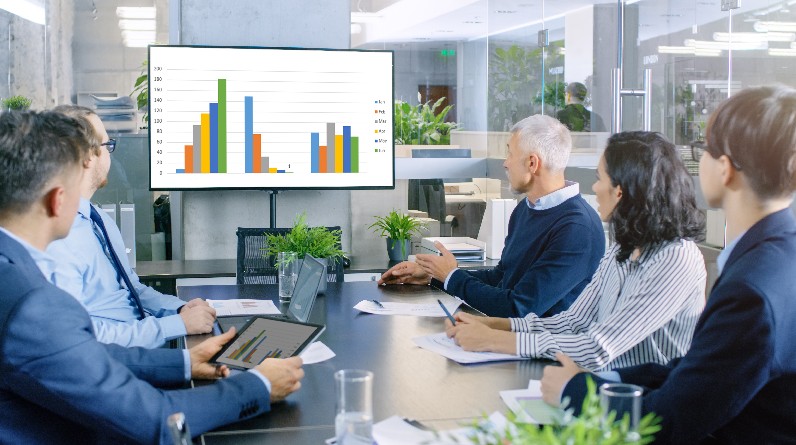Key Takeaways
- Strategic optimization for business audiences targets complex, multi-stage decision journeys and requires a tailored approach.
- Solutions must be crafted for the unique goals of multiple business stakeholders, not just a single buyer.
- Continued learning and adaptation to industry shifts are vital for long-term success in B2B marketing.
- Robust measurement and analytics reveal what works beyond just tracking website visits.
- Aligning technical excellence with education-focused content creates better business outcomes and loyal client relationships.
- Testing new approaches and staying proactive is key as digital buyer behavior changes.
Why Business Audiences Are Different
When organizations market to business audiences, they encounter a landscape that looks very different from consumer retail. Business leaders, managers, and procurement teams approach online research deliberately, often balancing immediate technical needs with long-term strategic priorities. Where a consumer might make a purchase based on a gut feeling or a single online review, business buyers must justify decisions with data, peer input, and evidence of value.
Appealing to these audiences requires a shift in digital strategy: attention spans are shorter, and expectations regarding content quality and relevance are higher. A one-size-fits-all approach does not work in B2B marketing. That’s why working with a specialized B2B SEO partner is essential. These experts look beyond the typical consumer-focused techniques, deeply diving into what drives intent, nurtures leads, and ultimately leads to business growth.
Longer Sales Cycles & Multiple Decision-Makers
In business purchasing, decisions are rarely made in haste or isolation. The average B2B decision can involve as many as six to ten stakeholders. These stakeholders often span several departments, each evaluating their priorities and risk factors. As a result, buying journeys can extend across weeks or even months, making the process more intricate than a single click-and-buy scenario familiar to B2C marketers.
- Segment content by stakeholder:Creating tailored resources—from technical whitepapers for IT leaders to ROI calculators for financial controllers—can make each buying committee member feel understood and supported.
- Nurture across the journey:Your content should change as questions and requirements change. Detailed case studies, interactive webinars, and third-party validations become critical in building consensus and moving prospects closer to a decision.
By aligning content with various audience needs, brands can effectively guide each stakeholder from initial research through negotiation to final commitment.
The Crucial Role of Trust and Authority
In an era saturated with marketing claims, businesses place more value on trust and evidence than ever. Business leaders cannot make decisions based on flashy headlines or aggressive sales tactics. They must account for compliance standards, operational efficiency, and organizational reputation. This makes the inclusion of expert commentary, independently verified results, and in-depth educational resources a cornerstone of B2B SEO.
Search engines recognize this shift. Google’s algorithm updates reinforce the importance of genuinely helpful, quality content. Companies that share actionable advice, unbiased data, and practical tips will fare better in rankings and foster greater engagement with their audience. Thought leadership, transparent testimonials, and evidence-based case studies can turn even the most skeptical visitor into a warm lead and, ultimately, a loyal client.
Balancing Technical SEO and Thoughtful Content
The B2B search landscape demands more than simply sprinkling in keywords or building backlinks. While technical soundness—such as ensuring mobile-friendly design, quick page loads, and secure connections—is fundamental, these elements only succeed when paired with content that answers business buyers’ real questions. Utility and accessibility go hand in hand because business users expect a seamless experience that helps them accomplish tasks efficiently.
- Use clear, concise headings and bullet points to simplify complex information and allow business leaders to make informed decisions quickly.
- Enhance content with advanced on-page elements like schema markup, metadata, and robust site architecture so search engines can easily identify and present relevant answers to user queries.
Regular audits, user testing, and a mobile-first philosophy help eliminate technical barriers and create digital spaces that encourage repeat visits and deep brand trust.
Content Mapping to the Buyer’s Journey
Understanding where a prospect is in their decision process is critical for every successful B2B marketing effort. Awareness-stage content might include industry research, blog posts, or guides that address emerging pain points. As buyers progress, they seek more sophisticated information—comparing solutions, attending webinars, or deep-diving into product specifications. Decision-stage content addresses final concerns, like ROI calculators, trials, or vendor comparison sheets.
- Awareness:Broadcast thought leadership and unique perspectives through blogs and digital magazines to build early-stage credibility.
- Consideration:Use whitepapers, webinars, and in-depth comparisons to nurture leads as they conduct detailed evaluations and shortlist candidates.
- Decision:Offer immediate access to demos, pricing tools, or one-on-one consultation for those ready to take the final steps.
Measuring Success Fulfilled by Strategy
Measuring the return on investment for B2B SEO isn’t as straightforward as counting product sales. Instead, marketers monitor a variety of micro-conversions, such as whitepaper downloads, webinar sign-ups, and demo bookings. This approach demands a mature analytics setup capable of attributing value across a prospect’s engagement with content.
- Monitor and report on pathways from keyword entry to final conversion, allowing teams to improve touchpoints and identify potential drop-off points.
- Build segmentation into analytics to assess which campaigns, formats, or messages generate the highest-quality leads—not just the most volume.
- Bring qualitative and quantitative data together so teams can adjust tactics based on numbers and honest customer feedback.
By adopting this holistic approach, organizations move beyond vanity metrics and focus on long-term relationships and high-impact opportunities.
Staying Ahead of Industry Shifts
The needs of business audiences never stand still. New technologies, marketplace disruptions, and shifting buyer preferences constantly shape digital purchasing behavior. Successful B2B marketers adapt to these changes, test new content formats, and consistently refine their approach.
Embracing interactive tools, personalized content, and emerging channels—such as short-form video or AI-driven chat—positions brands as innovators and thought leaders. Monitoring industry updates and aligning with current research ensures teams anticipate trends before they become the standard, safeguarding future competitive advantages.
The Art and Science of B2B Optimization
Business-to-business marketing isn’t just about traffic or keywords; it’s about enabling organizations to solve problems, make informed choices, and achieve long-term goals. Optimizing for business audiences blends technical expertise, content customization, and measurement discipline. Brands that master this intersection will see stronger engagement and create relationships built on value—not just transactions. As the digital landscape grows in complexity, this combination of art and science will define authentic B2B marketing leadership.



